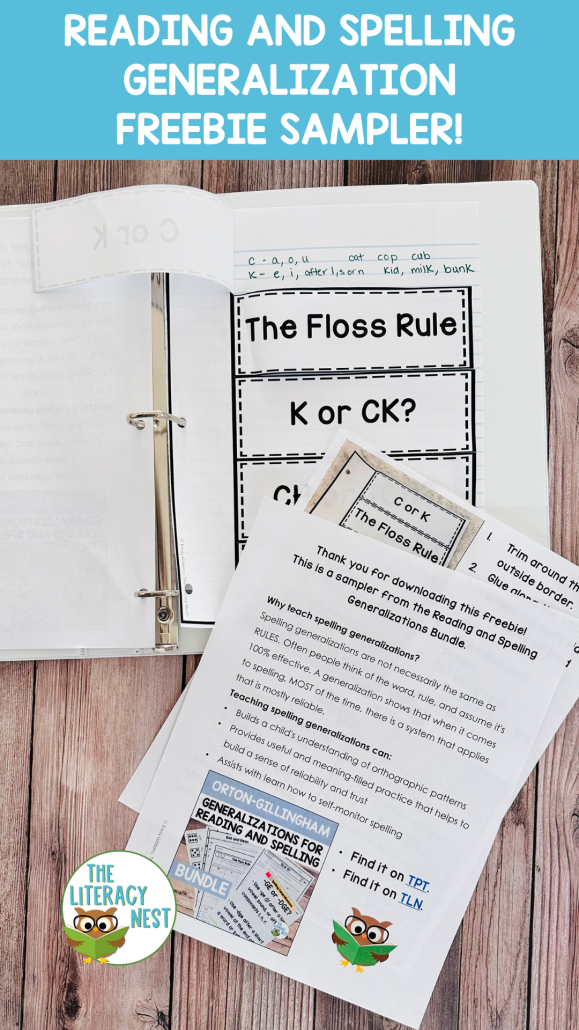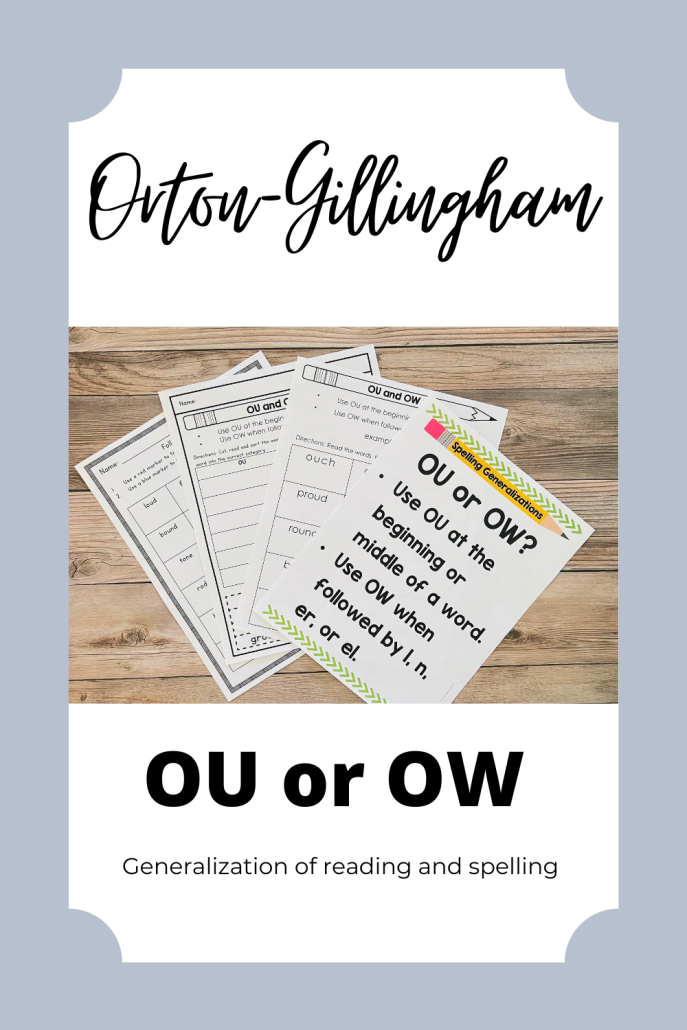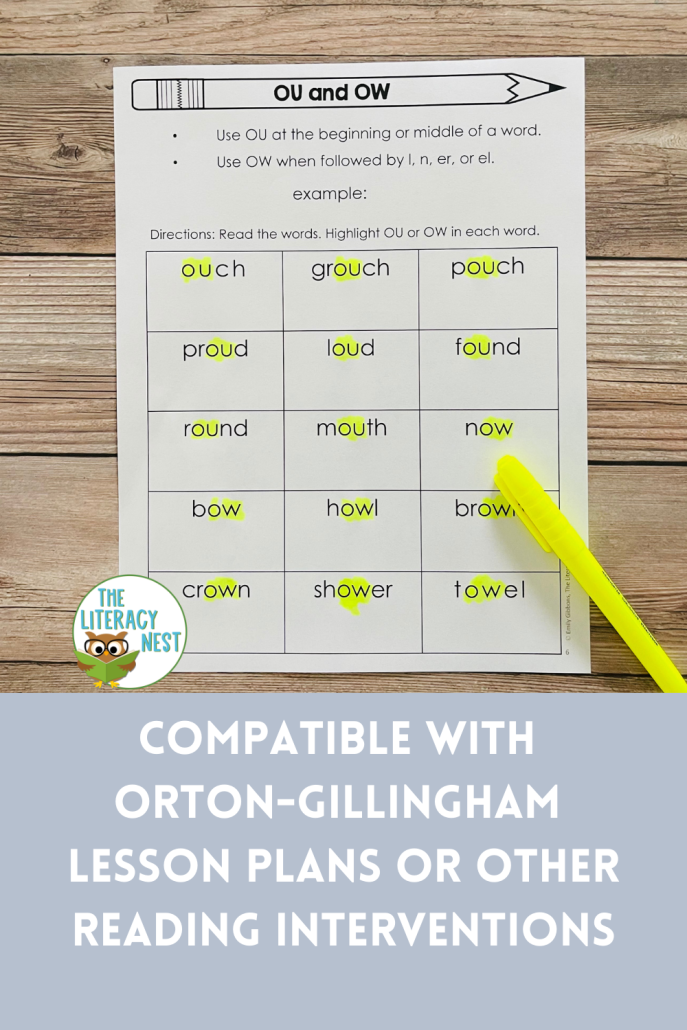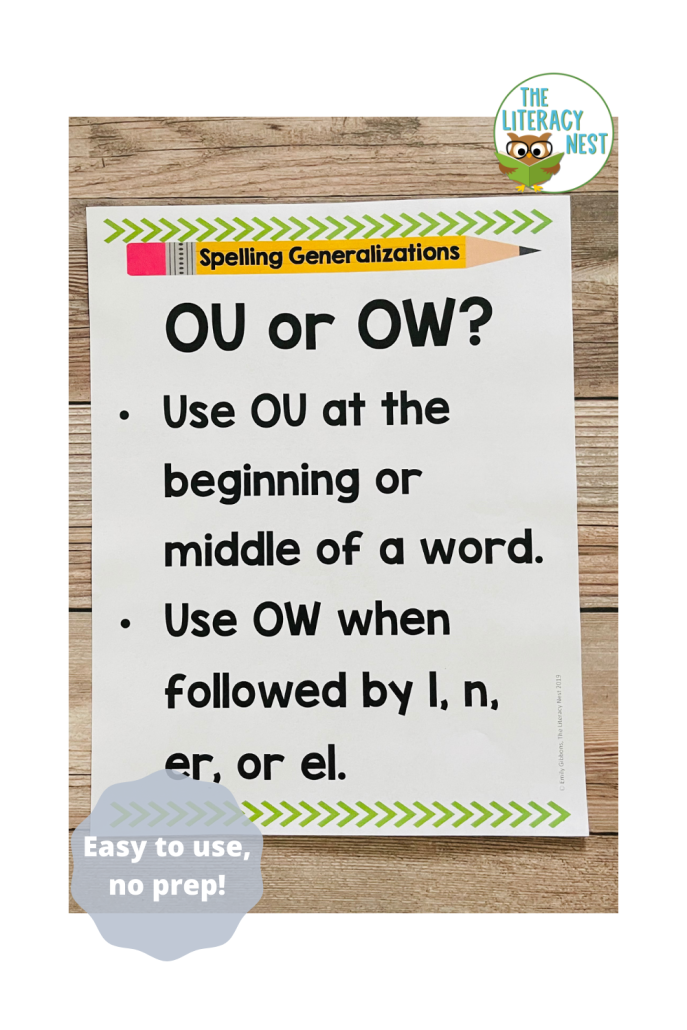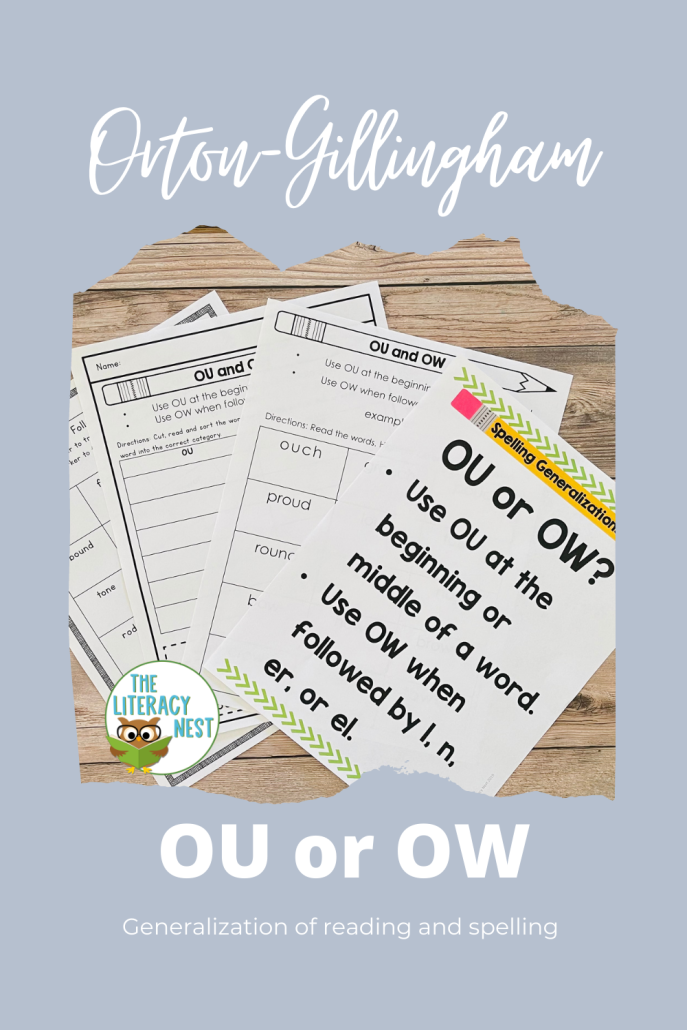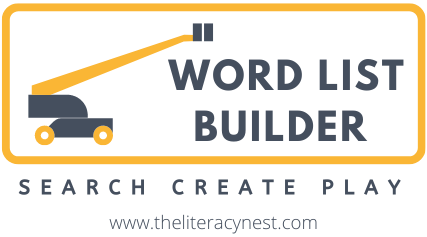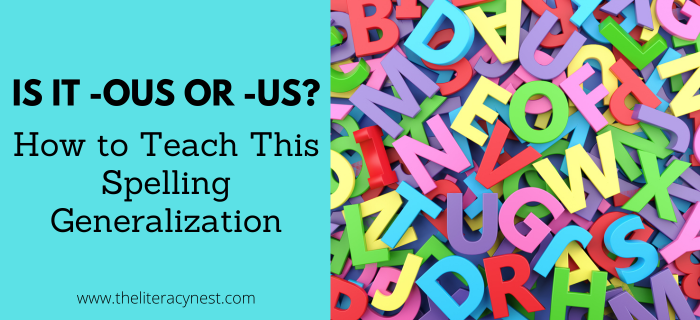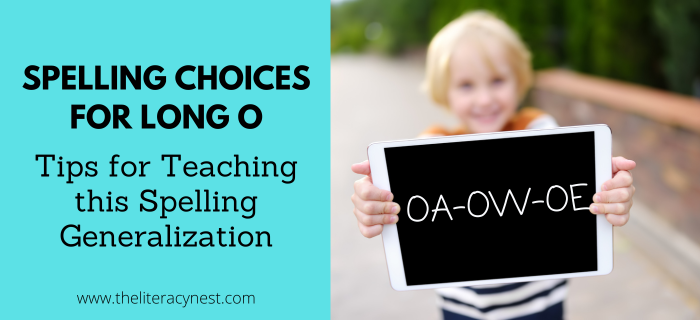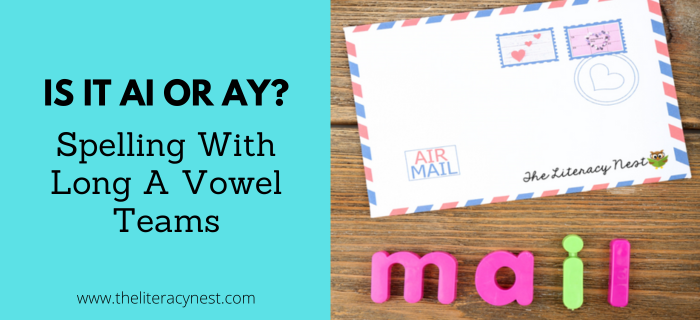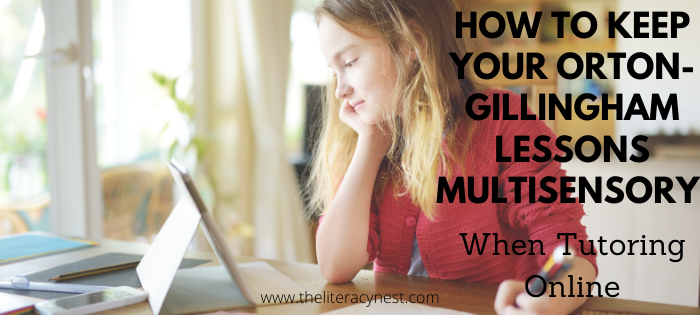Is it OU or OW? Tips for Teaching This Two-Part Spelling Generalization
Not all spelling generalizations are as neat and tidy as you might like them to be. Just as the spelling generalizations for the floss rule, ck, and tch build on each other, the same is true for the vowel spelling generalizations. By the time your students are introduced to ou as in ouch and ow as in plow, they have already had the opportunity to learn and practice the ai/ay spelling generalization. The ou/ow spelling generalization builds on that knowledge and adds a little bit of a twist.
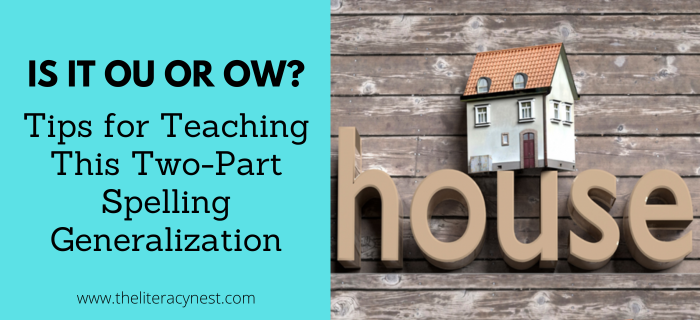
Teaching Two-Part Spelling Generalizations
Typically, you can teach this spelling generalization in two parts after having taught the phonograms individually. It is worth noting that the /ow/ sound is neither a short nor a long sound, but “something else”. Technically speaking, it is a diphthong, but for the needs of your students, it is important for them to recognize that it is neither long nor short. It is also a prime example of why we should avoid the highly unreliable “When two vowels go walking, the first one does the talking.” adage.
Read more on that in The Top Ten Tips For Teaching Vowel Teams.
Part one of the spelling generalization is almost the same as the ai/ay rule. When you hear the /ow/ sound at the beginning or in the middle of a syllable, it is usually spelled ou. When you hear the /ow/ sound at the end of a syllable, it is usually spelled ow. For ou, this holds true very consistently. I can’t think of a single instance where /ow/ is spelling ou at the end of a word.
Some words that follow this generalization include:
out ouch couch pout shout
cow plow brow how now
While this is quite straightforward, care must be taken initially to avoid words in which ow does not fall at the end of the syllable. To address those instances requires part two of the spelling generalization.
When the /ow/ sound is followed by just an n or just an l, it is usually spelled with ow. It may be helpful to think of these as word families that follow the 2nd part of the rule. Typically, it is helpful to demonstrate to students that this only applies when the n or l is alone at the end of the word. Words like found, count, and lounge are spelled with ou because the n is not alone after the /ow/ sound.
Some words that follow this generalization include:
owl growl howl town down clown
NOTE: There are occasions where ow will make the /ow/ sound at the end of the first syllable in a 2-syllable word, but this is not very common.
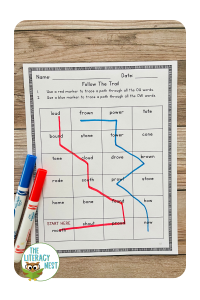
These words usually fit one of these patterns, where the first syllable is accented and the second syllable ends in er or el.
Tower power towel vowel
In order to teach this spelling generalization, it is helpful for students to be able to segment 4 or 5 sounds, be familiar with the vowel team syllable type, and have already learned the ai/ay generalization. I strongly suggest teaching the phonograms ou and ow individually first before tackling the decision of when we use each of these spellings. It is important that students apply this spelling generalization to the base word before adding suffixes.
Your students can use some guiding questions to help them make a decision when writing a new word:
- What is the base word?
- Where do I hear the vowel sound?
- What sound do I hear after the /ow/ sound?
Download our Reading and Spelling Generalizations freebie sampler! It includes mini posters, a note-taker, and a handy cheat sheet with links to blog posts and a video with teaching tips!
Here are Seven Simple Teaching Ideas for OU and OW:
Download this printable guide for teaching OU or OW!
1. Sorting
You can sort words by spelling or sort pictures by vowel location to build phonemic awareness skills.
2. Start from the known
Many students have a collection of sight words such as out, shout, down, brown, now, and how that they are already familiar with. These words can act as anchors to help students apply the spelling generalization.
3. Review activities
It is helpful to practice both possible locations for ow during the blending drill by occasionally following ow with an l or n. Playing games with spelling choices where students must choose ou or ow to complete a given word also reinforces this concept.

4. Dictation
Make sure to avoid using ou and ow in dictation after you have taught the individual sounds until you have taught part 1 of the generalization. Avoid words that follow part 2 until that has been taught. When it is necessary to use them before this has been taught, scaffold which spelling choice the student should use.
5. Games
Incorporate words with ou and ow vowel teams frequently in review lists and games.
6. Spiral and Review
I recommend keeping the ou and ow vowel cards as part of the card drill, blending drill, and incorporating it into dictation often. Be aware that although students may be automatic with writing words such as down and now, they may not be able to automatically use this phonogram when spelling less familiar words such as yowl.
7. Verbalize
It is valuable to have students verbalize how they know which spelling of the /ow/ sound they are going to use based on its location in the word.
Be sure to catch our other spelling generalization blog posts HERE for LOTS more tips.
While teaching a two-part spelling generalization may seem unnecessarily complex, it provides students with a useful framework for problem-solving this common vowel team.
This is an excellent foundation for the sort of complex considerations that come into play when students learn suffix rules down the road.
OU and OW Spelling Rules for Orton-Gillingham Lessons
Looking for systematic and explicit phonics instruction? This resource teaches the spelling generalization OU and OW. It is compatible with Orton-Gillingham lesson plans, dyslexia intervention, online tutoring, distance learning and other reading intervention programs. If you are an Orton-Gillingham tutor or teacher, these work well with your lesson plans!
You can grab it at The Literacy Nest Shop or on TpT.
If you are seeking more comprehensive practice, check out this Spelling Generalizations bundle.
Are you looking for a list of OU or OW words? Word List Builder has got you covered!
Save time searching for OU words or OW words! Create customized and meaningful review, build your folder of words, create templates and games, and much more in Word List Builder.


